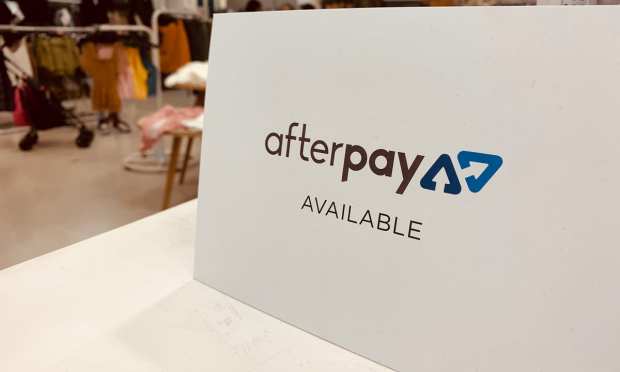Afterpay Co-Founder & Co-CEO: Buy Now, Pay Later Is In Right Place, Right Time

For a 6-year-old Australian startup that’s only been doing business in the U.S. for two years, Afterpay — with its buy now, pay later (BNPL) interest-free installment loans — has gone from relative obscurity to the front page of the financial section this holiday season.
Although the installment concept is hardly new, Afterpay’s platform and growing catalog of retailers has brought fame and fortune to the company and its founders.
Among them is 30-year-old Co-Founder and Co-CEO Nick Molnar, reportedly the youngest self-made billionaire in Australia, who told PYMNTS’ Karen Webster that Afterpay and BNPL are just in the right place at the right time.
“There aren’t many online payment providers that have successfully gone offline. Globally and in Australia, 20 percent of our transactions take place in physical retail,” Molnar said, calling his company “uniquely placed” to bring the next generation of shoppers into the physical world.
A big part of Afterpay’s growth stems from the fact that its super-simple service is appealing to both customers and retailers alike.
“Dick’s Sporting Goods launched in-store prior to the holidays because there’s zero integration work required,” he said. “So [Afterpay] is unique in the very small effort involved for a retailer to actually get live.”
Preference For Debit
Molnar said Afterpay is not only benefiting from its easy-to-use platform, but also from the fact that consumer preference has shifted toward using debit over credit.
“When you build a product that speaks so deeply to customers who prefer to spend money on a debit card over a credit card, it’s a testament that customers are starting their shopping journey with us,” Molnar said of the BNPL payment trend that has gone mainstream since the pandemic, in which Afterpay has found itself in a strong position of preference, noting the 1.2 million U.S. merchant referrals it did on Black Friday alone. And now that the company has amassed a base of 13 million U.S. customers, he said Afterpay has become as much of a marketing channel for its retail partners as it is a financing tool.
Lower Loss Rates
After Capital One’s decision this week to halt future credit card linkage to BNPL plans because of concerns that they carry risks consumers don’t understand, Molnar said the mandate will not hurt Afterpay.
“Ninety percent of our transactions are paid with a debit card, not a credit card,” Molnar said. “We’ll obviously continue to engage with Capital One around their decision, but we see no major impact on our business.”
Furthermore, Molnar said that Afterpay’s gross losses over the past 12 months were 1 percent, which is significantly lower than the credit card market, and the company’s average transaction size is only $150.
“Our business model is fundamentally different, so the ability to extract the high-quality consumer who is using the service to be responsible is absolutely what we see,” he noted.
To that point, Molnar said the company’s loyalty program is designed to reward responsibility and timely payment rather than the dollar amount spent.
“The most important advantage we have is that we never started life as a finance company,” he said. “We never use a soft or hard credit check. We never upsell an interest-bearing credit product, and our business is always interest-free. So, there’s just a distinctive DNA and different business model based on our upbringings.”
Demographic Demand
While it can be argued whether BNPL plans are risky or cause people to spend more, what can’t be denied is the newfound popularity and convenience of the season’s hottest payment choice.
“There’s no doubt that buy now, pay later is mainstream now, and it’s the fastest-growing way to pay in the developed world,” Molnar said.
But perhaps even more importantly, BNPL is also proving to be very popular among younger shoppers aged 25 to 40.
“The ability to be a marketing channel for the hardest-to-reach customer base, the millennial and Gen-Z cohort, is really a privileged position to be in,” Molnar said.
In fact, unlike the high-rate, high-fee relationships that many consumers have with traditional banks and creditors, Afterpay has somehow managed to fall into a different relationship with its customers.
“The most used word in our App Store review is ‘love,’” Molnar boasts. “That’s why people are now starting their shopping journey on our directory, at afterpay.com or on our app.”
As a result, the company has found itself in a very unique position of winning affection from both retailers and consumers. “Staying true to our values is critical,” Molnar said.
Expansion Opportunities
Beyond Afterpay’s efforts to expand to new global markets while adding more consumers and retailers along the way, Molnar said the year ahead will be focused on adding new categories.
In Australia, for example, Afterpay can be used to buy airline tickets and pay for dental appointments.
“The ability for someone to get healthcare when they need it and have Afterpay be there to help them budget is key,” he said. “It’s not just about buying a fashion garment — it’s about using our site for all the facets of your life in a way that is helpful.”
To that point, the company has just signed a partnership deal with Westpac Bank, and Molnar said there will likely be similar ventures in the future.
“There’s certainly an opportunity for us to expand our retail products category and acceptance network, and that will be a core focus for us in 2021,” he said.
